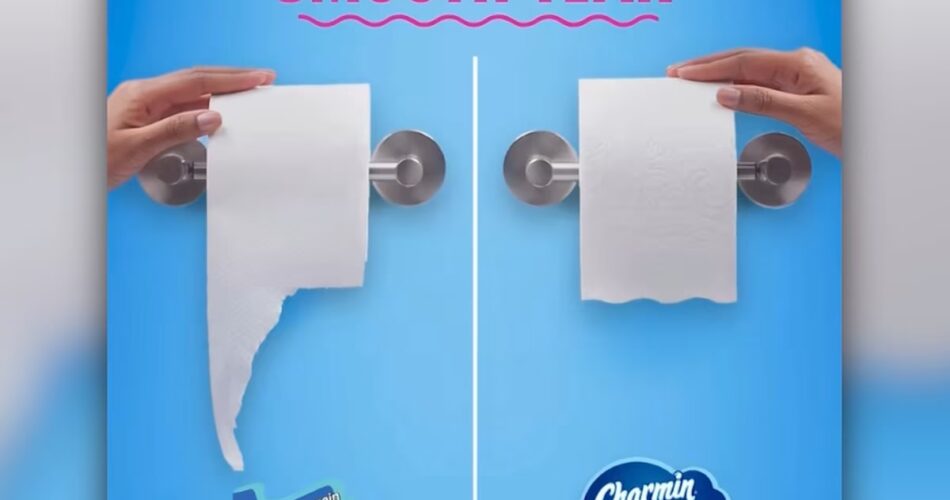A toilet paper manufacturer developed a new and useful tear
Some people may have bumped into new toilet paper rolls in which the traditional sheets were no longer square where each perforated edge had a series of gentle curves instead of being a straight line, much like a sound wave. That gives the toilet paper a sophisticated, scalloped appearance, as though an interior designer had been recruited to swank up the buttwiping.
According to this article, the roll comes from a brand-new 24-pack of Charmin Ultra Soft. The enormous blue label does not, in fact, indicate any difference at all. The toilet tissue that the bear on the packaging softly rubs to his cheek while savoring its ultra-softness has a square shape and straight edges, which is in no way indicative of the wavy tear.
Google searches indicated that this toilet paper makeover had also been experienced by others. Although Charmin responded to a few of the posts in which some people complained about the new design, the company had not truly explained the change.
However, Charmin’s public relations department said that the company was finally formally launching Smooth Tear, its updated, scalloped-edge toilet paper. Even while he acknowledged that some people found the scalloped edges to be attractive, he explained that they served a functional purpose: wavy edges are intended to address the most common issue with toilet paper that consumers encounter, the incomplete tear.
The most common complaint received by Charmin’s call center is an incomplete tear. The majority of toilet paper fibers run vertically through the roll; therefore, tearing across goes against the material’s natural grain. Also, the ways in which people tear differ greatly based on where they keep the paper in their bathroom, whether they are left- or right-handed, and if they like to tear over or under the roll. However, the majority of people tear in a downward diagonal as opposed to a straight line, which results in that final lone strand being left on the roll.
In order to find the ideal shape, scientists hand-punched perforations into blank rolls of paper in the R&D labs. They tried a diagonal line that matched the angle of force of the typical tear, but they found that it only worked well on one side. The team discovered that the wavy line could best survive the combination of sideways and downward forces seen in most consumer tearing movements.
Retooling the company’s six toilet paper factories to comply with the introduction of perforation required five years. Toilet paper as we knew it before Smooth Tear was produced back in the Industrial Revolution. Over a century ago, it was designed to operate well on a line. Manufacturing is best served by straight perforations that are at a good, straightforward 90-degree angle to the toilet paper that is moving through the machines at 60 mph. The team had to supervise the changing and replacement of the company’s perforation equipment once they had come to the conclusion that wavy edges were superior in order to supply that wavy line quickly.
This invention, which is now only accessible on Charmin Ultra Soft, cost real money to develop. The Cincinnati lab, complete with robot tear-testers, “balloon butts”, and its secret formula for synthetic poop, was the subject of a fun 2019 Popular Science article. Charmin does like to draw attention to its research and development, explained Gregg Weaver, a senior scientist at Procter & Gamble in Cincinnati.
Weaver’s father, who also worked at Procter & Gamble, allegedly informed him that working there was akin to receiving a college education. “The majority of my paper science has been learned inside the company, more so than at a college”. For 25 years, Weaver has worked for Procter & Gamble. Weaver isn’t particularly uncomfortable discussing the gritty details of the restroom, which is appropriate for a man who spends his days thinking about toilet paper. “It’s something everybody does”, he says, “and why not enjoy that experience?”.

